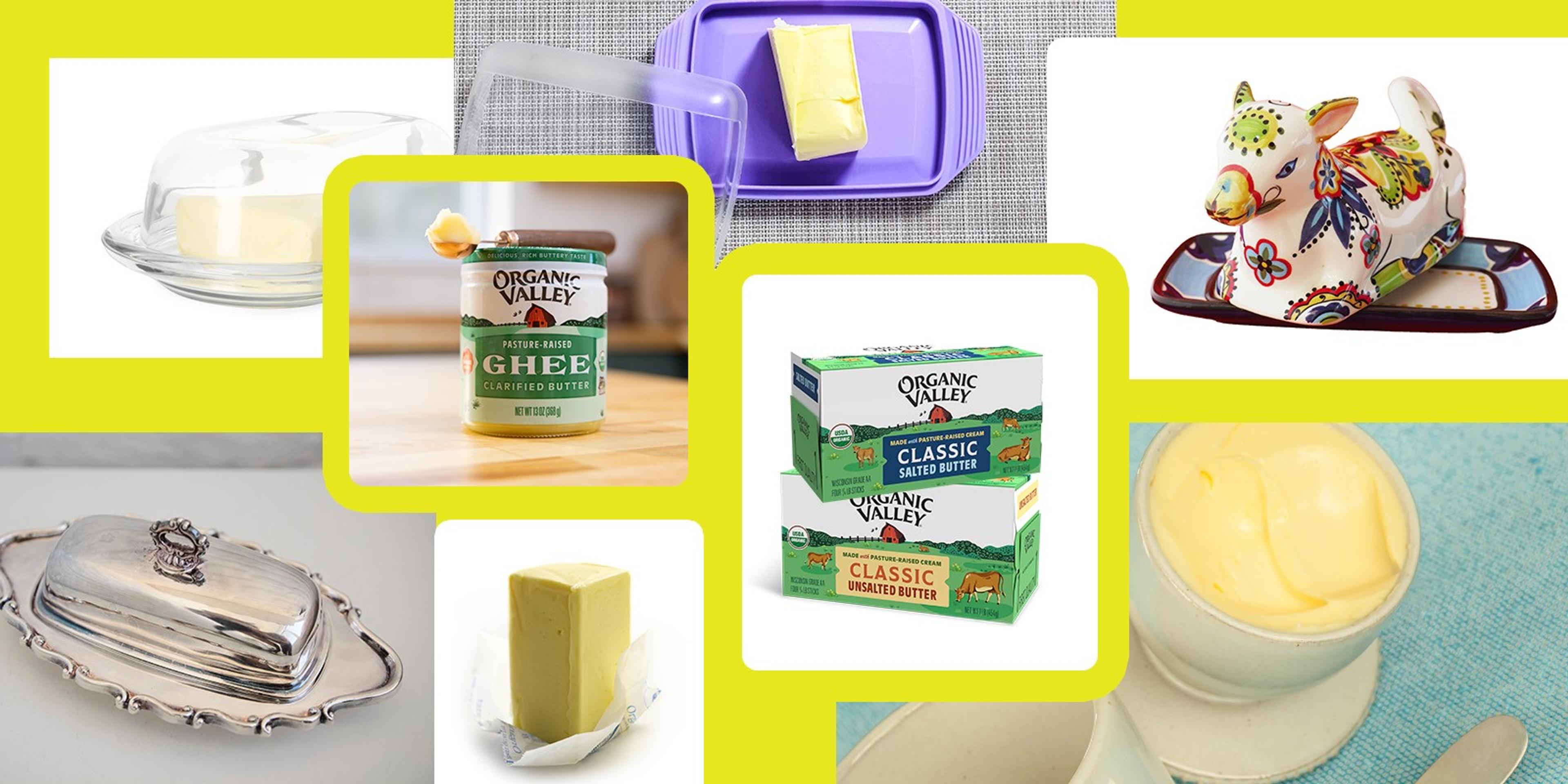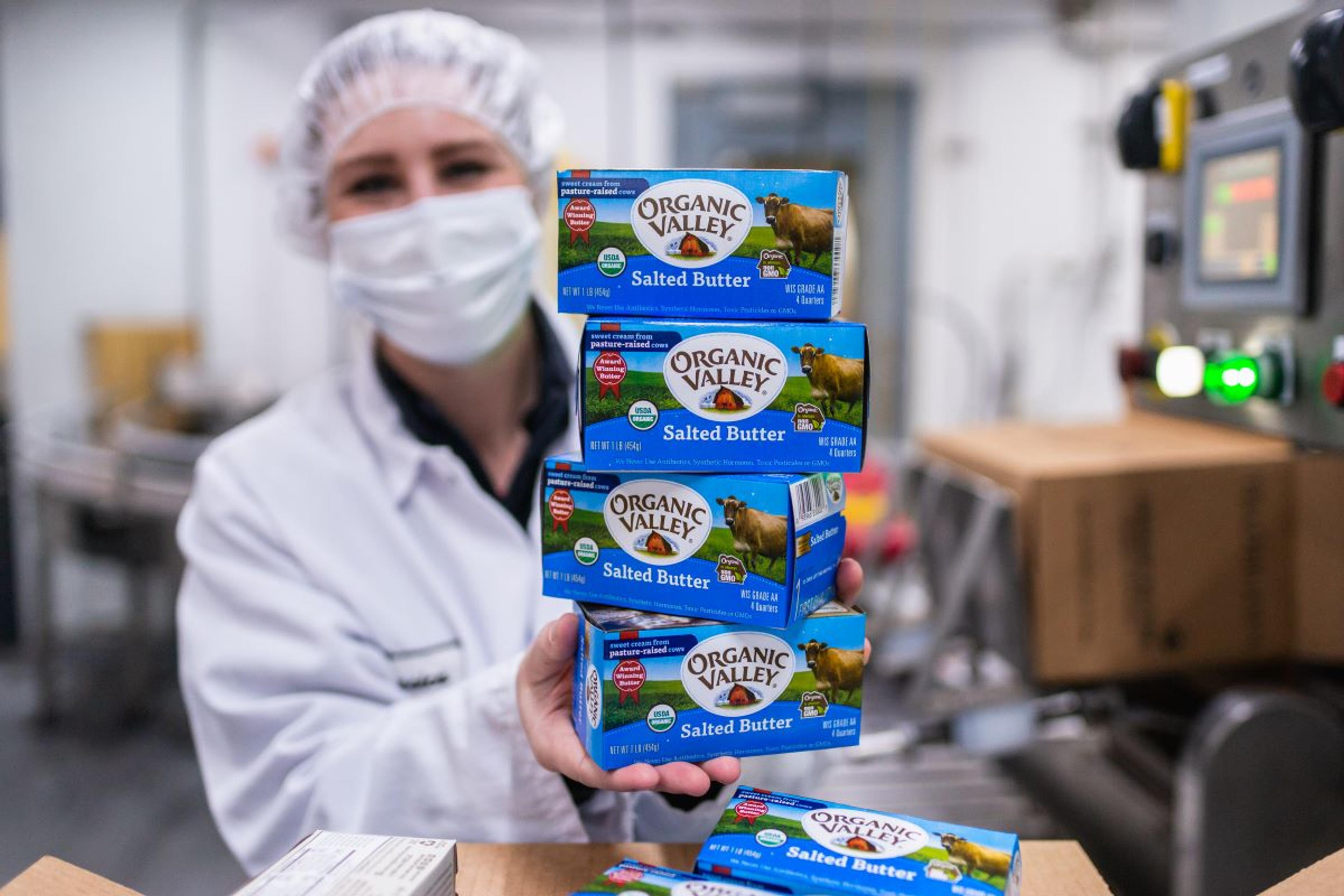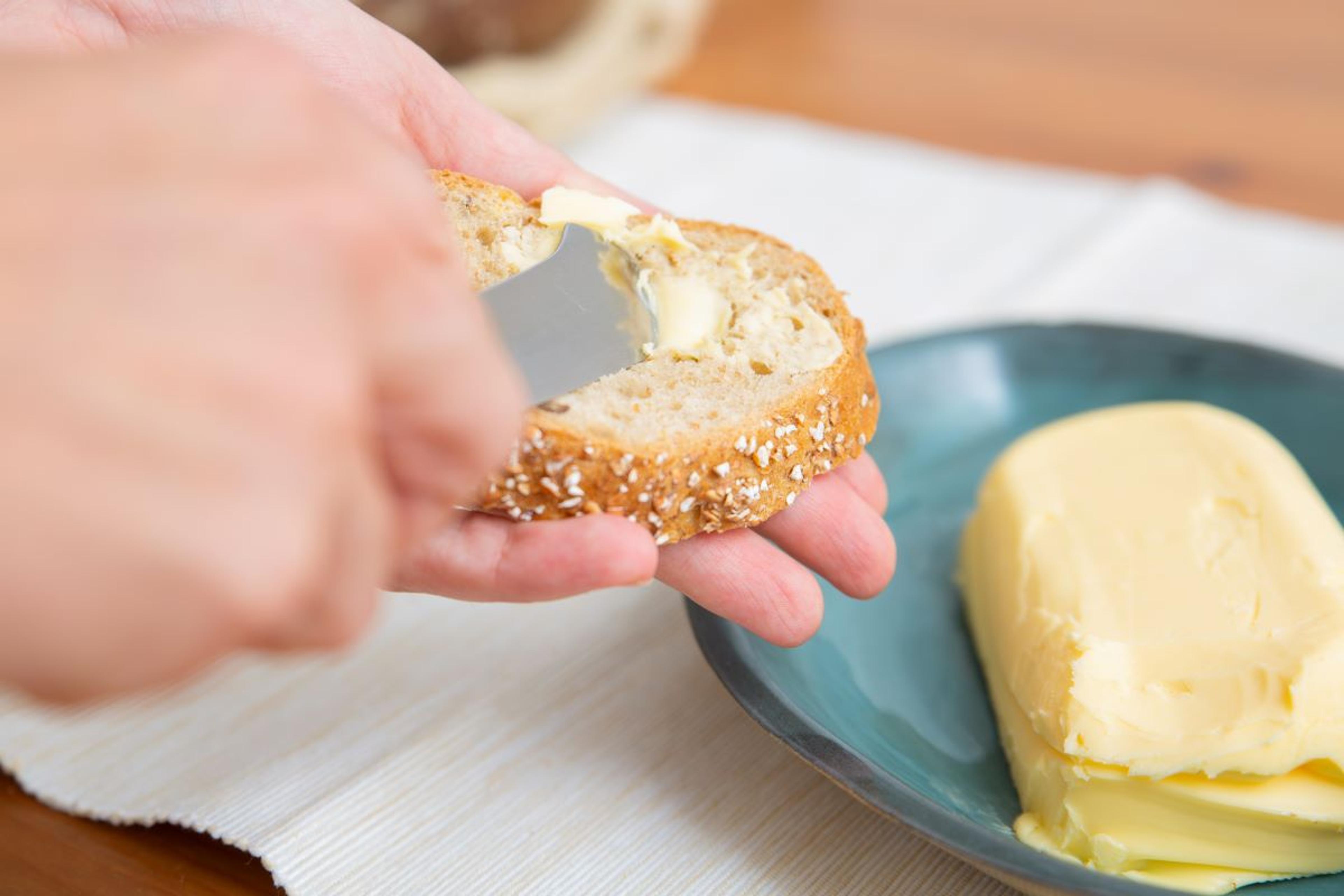
Food
How to Store Butter to Preserve Taste, Color and Nutrients
Are you someone who keeps your butter on a plate on the counter, in the wrapper on the counter, in the wrapper in the fridge, in any old dish in the fridge, in a butter keeper, or in a butter dish? Maybe you are a combination of these or have other creative ways of storing butter. But what is the best way to store butter?
The butter package says, “keep refrigerated.” But come on, it’s so nice to spread melty butter on toast and the convenience of leaving butter easily accessible is so tempting. So does butter really go bad? (If you are familiar with delicious Organic Valley Butter, you know a stick of butter doesn't stick around long enough for you to find out!) Let’s talk about butter storage.
The Best Way to Store Butter
If you buy butter far in advance of use, store butter in the freezer. This is the best way, as freezing butter does not alter the taste or texture of butter.
If you use butter frequently, keep it in the refrigerator away from aromatic foods (such as garlic or onions) because butter absorbs odors easily. Butter and dairy in general are receptive to picking up other flavors, said Sam Barton, Organic Valley senior food technologist.
Oxygen, light, heat and air cause oxidation which create off flavors in dairy products. Whatever you can do to eliminate those factors will help keep the product in its purest form.
The parchment paper on Organic Valley's butter is designed to protect storage contamination from the day it comes from the creamery to the day you put butter in the fridge. Organic Valley uses quality parchment paper (not the flimsy film you may find on other brands) to keep the butter’s delicious flavor intact.

An Organic Valley team member holds freshly made organic salted butter.
If you really like butter you are not going to set it on a plate on the counter, said Scott Rankin, University of Wisconsin-Madison Department of Food Science professor and department chairman. “You are going to treat it like a valuable food and treat it with respect.”
Even though you may not be a butter expert, Rankin said, “If the average consumer tasted it side by side, they’d know the difference between butter that has been refrigerated or that has been sitting out.”
Salt is in butter for more than just taste! It acts as a preservative. While it is not recommended to leave butter out as it will begin to degrade, salted butter has enough salt and water that it is safe to store at room temperature (just be sure to keep it out of reach of curious pets that may want a taste!).
Be more cautious with leaving unsalted butter out as it degrades quicker. As far as taste, the colder the butter the better as once it leaves the fridge it begins to lose its true flavor, the color may lighten and even some nutrients in butter, like vitamin A, can start to break down, Rankin said.
The U.S. Department of Agriculture reports butter is safe at room temperatures but because the flavor can turn, it’s best to leave out only what you can use within a day or two.
A Tip to Soften Butter Fast
If you decide to keep a stick of butter in the fridge, a good way to get it soft and spreadable is to heat hot water in a bowl, remove the water and put the bowl upside down over the butter so the heat from the bowl warms the butter and makes it softer.
Check out "7 Easy Ways to Soften Butter" for more butter-softening tips.
It is OK to refreeze or refrigerate butter after it has been outside the fridge, as long as it wasn’t out for an extended period. It’s also wise to clean the dish before adding a fresh stick of butter to a dish to avoid contamination.
No matter where you store butter, you should consume it by or before the expiration date on the package.

The Best Butter Dish
Butter dishes come in all shapes, sizes and prices! Butter dishes range in price from a few dollars to more than a thousand! Though you may pay a pretty penny for a butter dish, it doesn’t mean it’s going to keep your butter fresher. So how do you store butter without refrigeration?
If you do store butter in a butter dish outside of the fridge we recommend a glass or porcelain butter dish. Just like being around aromatic foods, butter can take on off flavors from bamboo, plastic and other synthetic butter dishes. Every time you cut the butter, you drag the knife across a dish that can harbor flavors and aromas that can be transferred to the butter.
A butter crock, butter keeper and French butter dish are basically the same thing with different names. They are designed to keep butter fresh and spreadable by keeping out light and air to help slow the degradation process. The butter is put into the bell which is placed in a water-filled crock with a lid that forms an airtight seal. While these types of butter storage may help in some respects, claims of airtight seals are not always fail-safe. However, the light protection crocks and dishes may provide can help slow the degradation process.

How to Store Ghee
Organic Valley® Ghee storage techniques are less involved than regular old butter’s. Are butter and ghee the same thing? Ghee is clarified butter that is cooked longer, leaving behind hints of sweetness and roasted nuts that add depth and richness to food. Use ghee like you’d use oil or butter in any dish.
Our organic ghee comes in a glass container that can be left on the counter. Unopened jars of ghee can be stored without refrigeration for up to one year! Ghee is shelf stable and it can be refrigerated or kept on a countertop, but we suggest storing ghee in a cool, dry, dark place for optimal flavor.
What Is the Butter Grade?
See that “Grade AA” printed on the front of your Organic Valley® Butter package? That’s a good sign that you’ve picked the best butter!
The U.S. Department of Agriculture has certain grades of butter. AA is the top grade, defined as possessing a fine and highly pleasing butter flavor, along with a number of other pleasing attributes. Grade A is a step below and Grade B butter is even less pleasing.
In some states, like Wisconsin where Organic Valley got its start, the Wisconsin Department of Agriculture, Trade and Consumer Protection identifies grades and requirements for butter, too. Butter cannot be sold in Wisconsin unless it is graded. Organic Valley didn’t start making butter to get the Grade AA ranking, we make great butter because we believe in nutritious, delicious products for our families and yours. The grade just comes along with a great product.
What Makes Butter Taste Great?
When our cows eat well, so does your family! At Organic Valley, we use milk from cows raised on green pastures. The cream that is separated to make butter will never be better than the milk it is sourced from, and Organic Valley milk is delicious.
Our animals eat all organic food, so every bit of that food was raised without the use of toxic chemicals or GMOs, which means fewer chemicals in our ecosystems and waterways.
No matter what kind of butter keeper you use, be it a butter crock, ceramic butter keeper, French butter dish, cow-shaped butter dish, or paper plate, the big takeaway is that butter is very reactive and absorptive and the colder the butter is, the longer its flavor will be preserved.
Butter boards are getting a lot of attention lately! What is a butter board? Simply put, a butter board is a place to get as creative as you'd like with butter! Check out Organic Valley's version of a butter board (using organic butter of course).
An antique typewriter fanatic and chicken mom who treasures time outdoors admiring all that nature has to offer, Jennifer McBride is Rootstock’s editor. McBride spent 15-plus years as a journalist and newspaper editor before finding her niche with the nation’s leading organic dairy cooperative. Contact her at Rootstock@organicvalley.com.
Related Articles
- Tags:
- organic nutrition,
- food labeling,
- high quality products


















